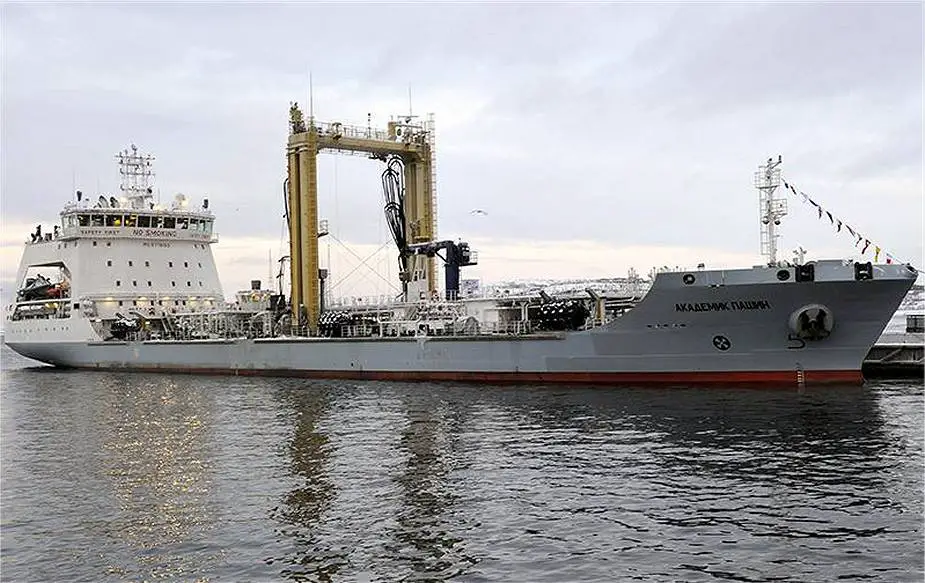Breaking news
Russian navy will create an Arctic group of tanker ships of Project 23130.
According to information published by the Russian press agency TASS, on August 20, 2020, the Russian Defense Ministry will create an Arctic group of tanker ships of project 23130. The lead ship has joined the Northern fleet. Six vessels have to operate in the Arctic in several years. They will fuel warships at sea and operate as the main logistical element of the Russian Arctic infrastructure.
Follow Navy Recognition on Google News at this link
 Project 23130 is a series of medium-size replenishment oilers developed by the Spetssudoproect JSC and built by Nevsky Shipyard for the Russian Navy. (Picture source Nurlan Aliyev Twitter account)
Project 23130 is a series of medium-size replenishment oilers developed by the Spetssudoproect JSC and built by Nevsky Shipyard for the Russian Navy. (Picture source Nurlan Aliyev Twitter account)
The Russian Navy flag was hoisted on the Akademik Pashin lead tanker of project 23130 in January. The next tanker is expected in 2024 and the whole series of six vessels is to be completed in 2028, Defense Ministry sources said. Some of them will operate in the Northern fleet. They will deliver fuel and resources to the coastal Arctic infrastructure.
Project 23130 tanker has a displacement of 9 thousand tons. It is 130 meters long and 21 meters wide. The maximum speed is 16 knots. The autonomous navigation can last two months. The maximum range is 8 thousand nautical miles. The tanker can operate in 0.8-meter thick Arctic ice.
The vessel can carry 3 thousand tons of black oil, 2.5 thousand tons of diesel fuel, 500 tons of aviation kerosene, 150 tons of oil, 1 thousand tons of fresh water, and 100 tons of food and outfit.
The contract for project 23130 tankers was signed on November 1, 2013. The first ship had to be commissioned in 2016, but sanctions delayed the project, as foreign components had to be replaced.
A group of modern tankers will expand the geography of the Northern fleet. “A warship can sail to Gibraltar from a Northern fleet base by an economical run,” former Navy Chief-of-Staff Admiral Valentin Selivanov said. “It then needs refueling. Even one warship sailing to the Mediterranean, the Indian Ocean or Cuba is accompanied by a tanker and refuels every three-four days. All operational tankers were built last century. Twenty-five years ago I was the Navy chief-of-staff and constantly asked to give us at least one new tanker,” he said.
The Northern fleet will enjoy priority in receiving tankers, as it is the biggest and most active, the admiral said. “Its warships sail to the Mediterranean, South America, and by the Northern Sea Route. Tankers can deliver fuel both for warships and naval bases in the Arctic. We should not charter domestic or foreign civilian tankers for that. The Navy badly needs its own tankers,” Selivanov said.
Large-scale infrastructure construction is ongoing in Kotelny Island and other Arctic territories. All the facilities need fuel, spare parts, equipment and other resources. The available tanker fleet was built several decades ago and will soon be decommissioned.
Russia began to mount presence in the Arctic in mid-2010s. In December 2014, the North united strategic command was created with headquarters in Severomorsk. It commands territories and military units withdrawn from the Western Military District. The Arctic force was then strengthened by troops of the Central and Eastern Military District deployed in the Polar region, the Izvestia said.
© Copyright 2020 TASS Navy Recognition. All rights reserved. This material may not be published, broadcast, rewritten or redistributed.


























